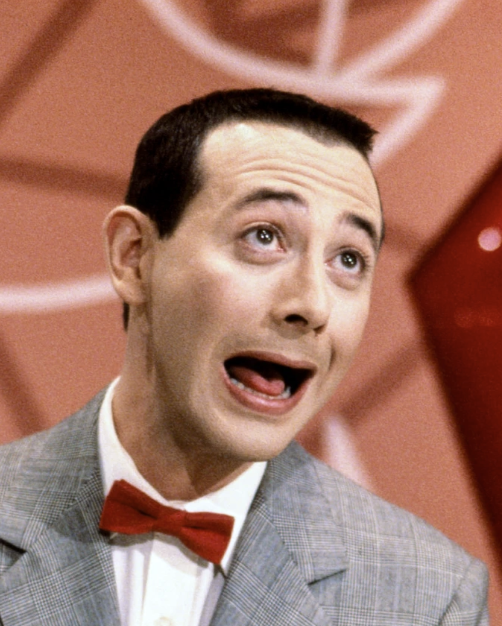Paul Reubens died, at age 70, on Sunday, after a long illness. He was best known as Pee-wee Herman, and that’s the person who I certainly knew, and loved for his quirkiness and queer innocence. Some people might remember him as the guy who got caught with his pants down in the back of a porn theatre, long before we had cancel culture, but just like Kramer from Seinfeld, some times you weigh more than a duck, and you end up burned at the stake.
I came to the United States in 1984, just as Ronald Reagan was winning his second term, and just before Paul Reubens hooked up with Tim Burton (who went on to make Beetlejuice, Edward Scissorhands, and Batman, along with many other memorable movies) to make the movie “Pee-wees Big Adventure” in 1985. It wasn’t the movie , however, that captured my attention, but the Saturday morning CBS childrens show “Pee-wee’s Playhouse.” From 1986 to 1990 I watched each Saturday morning while Pee-wee paraded a gaggle of soon-to-become famous actors across the screen (Laurence Fishburne was Cowboy Curtis, Phil Hartman was Captain Carl) as weird and wonderful characters in his make-believe world, that was simple, and kind, and surreal, and certainly aimed at adults more than kids. But the best kids entertainment (Bugs Bunny, Sponge Bob Squarepants, for example) are really gritty satirical adult shows masquerading as kids shows which makes them even better entertainment (and watchable by the whole family!)
Pee-wee gave me some lifetime lines, such as “I know you are, but what am I?”, and the common French line “merci, blah, blah.” And of course my favorite: : “I wouldn’t sell my bike for all the money in the world. Not for a hundred million, trillion, billion dollars!”
I’m saddened by the death of Paul Reubens, and I hope he’s remembered as the comic genius he was.
https://www.newyorker.com/culture/postscript/paul-reubenss-preposterous-grace







